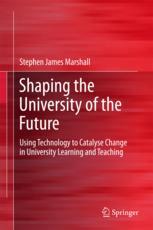

Most ebook files are in PDF format, so you can easily read them using various software such as Foxit Reader or directly on the Google Chrome browser.
Some ebook files are released by publishers in other formats such as .awz, .mobi, .epub, .fb2, etc. You may need to install specific software to read these formats on mobile/PC, such as Calibre.
Please read the tutorial at this link: https://ebookbell.com/faq
We offer FREE conversion to the popular formats you request; however, this may take some time. Therefore, right after payment, please email us, and we will try to provide the service as quickly as possible.
For some exceptional file formats or broken links (if any), please refrain from opening any disputes. Instead, email us first, and we will try to assist within a maximum of 6 hours.
EbookBell Team

4.8
64 reviewsThis book focuses on developing an understanding of the complex interplay of forces acting on individual universities and higher education systems to enable leaders and practitioners to take purposeful and strategic action. It explores the challenging landscape of higher education and the pressures that are reshaping the university as a societal institution, describing the complex interplay of technological, sociological, political and economic forces driving change. The issues analysed are global in scope, reflecting the diversity of contexts, but also the common nature of the challenges facing institutions individually and collectively. The analysis draws on the lessons learnt and evidence from over fifty organisational case studies undertaken by the author over the past decade, exploring organisational change in higher education institutions in New Zealand, Australia, the United States and the United Kingdom, and on his engagement as president of the ACODE organisation with colleagues responsible for learning technological change in Australasia. The book helps institutions respond to technological change purposefully, in ways that build upon a clear understanding of the complex nature of the existing institution, its students and the organisational context.